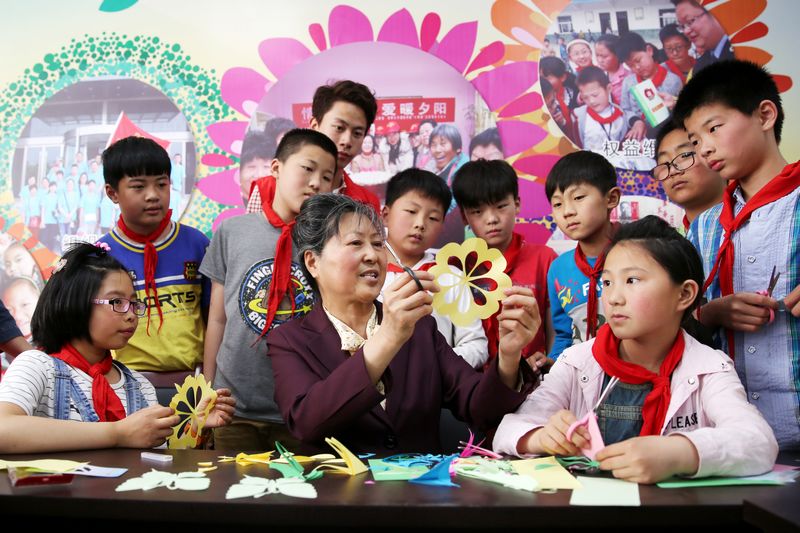Youth engagement in cultural inheritance creates cultural identity

Zhang Xiuzhen, an intangible cultural heritage inheritor of paper cutting in Huaibei, Anhui Province, teaches students traditional skills of paper cutting under the “going into campus” initiative.
Culture is passed down from generation to generation. Education institutions can play a role in passing down cultural legacies. Many inheritors of intangible cultural heritage go to school campuses where they share performances with students, such as performing with diabolos, making kites, singing Peking Opera and acting, and making clay rabbits for the Mid-Autumn Festival.
Some teach children to make traditional handicrafts by hand, and introduce traditional cultures face to face, which helps bring these students into contact with these forms of culture and pass down their legacy.
In recent years, the plan entitled “going into campus” has achieved results in terms of disseminating the concept of protecting intangible cultural heritage.
However, the current “going into campus” activities mainly focus on performances and exhibitions that introduce protection projects of intangible cultural heritage to students and teachers. These activities are part of efforts to disseminate the concept of protecting intangible cultural heritage but are rarely integrated with students’ classes and teaching materials. This indicates there is room for further improvement through improved means of spreading knowledge, skills training and academic communication.
For reference here, we can look at initiatives within international treaties and national laws, and further optimize efforts to protect intangible cultural heritage via the “going into campus” scheme through systematic top-level design and specialized complementary practices.
We need to promote the plan steadily and better develop the role curricula and teaching materials played in preserving China’s traditional cultural legacy on campus. For instance, at the stage of compulsory education, we should encourage elementary and secondary schools to set up courses about local history, traditions and art and absorb the essence of local intangible cultural heritage into textbooks. Schools can spread knowledge about cultural legacies within a specific area of each school, and hold lectures on hometowns and local culture, cultivating students’ interest in understanding and passing down intangible cultural heritage. Some local universities can combine intangible cultural heritage education with the majors of local history or art, further promoting the inheritance of intangible cultural heritage and the reform of higher education.
In addition, some disciplines that involve intangible cultural heritage lack professional teachers. Some elementary and secondary schools, along with universities, hire intangible cultural heritage inheritors as part-time teachers or even professors to teach students knowledge and skills of making traditional handicrafts or performing local operas. In order to improve teaching results, teachers should accelerate the creation of textbooks of intangible cultural heritage, and closely cooperate with traditional cultural inheritors, exploring and establishing a characteristic development path of intangible cultural heritage education.
At present, due to asymmetric information and non-systematic traditional cultural education, some young people prefer to worship exotic cultures rather than local cultures. So it is urgent to protect traditional cultural roots and spread knowledge of protecting intangible cultural heritage through school education. Many local cultures have already lost their living environment, and some training for cultivating local operas, folk art or folk song performers need first to teach performers the local dialects, otherwise it will be difficult for them to pass down local traditions.
In brief, the plan of “going into campus,” as an idea, practice, strategy and measure of protecting intangible cultural heritage, should be enriched, expanded, deepened and elevated. The special characteristics of school education, including its natural responsibility to students and objectivity, determine its role in inheriting and protecting traditional legacies.
Wu Wenke is the director of the Institute of Chinese Folk Art at the Chinese National Academy of Arts.
